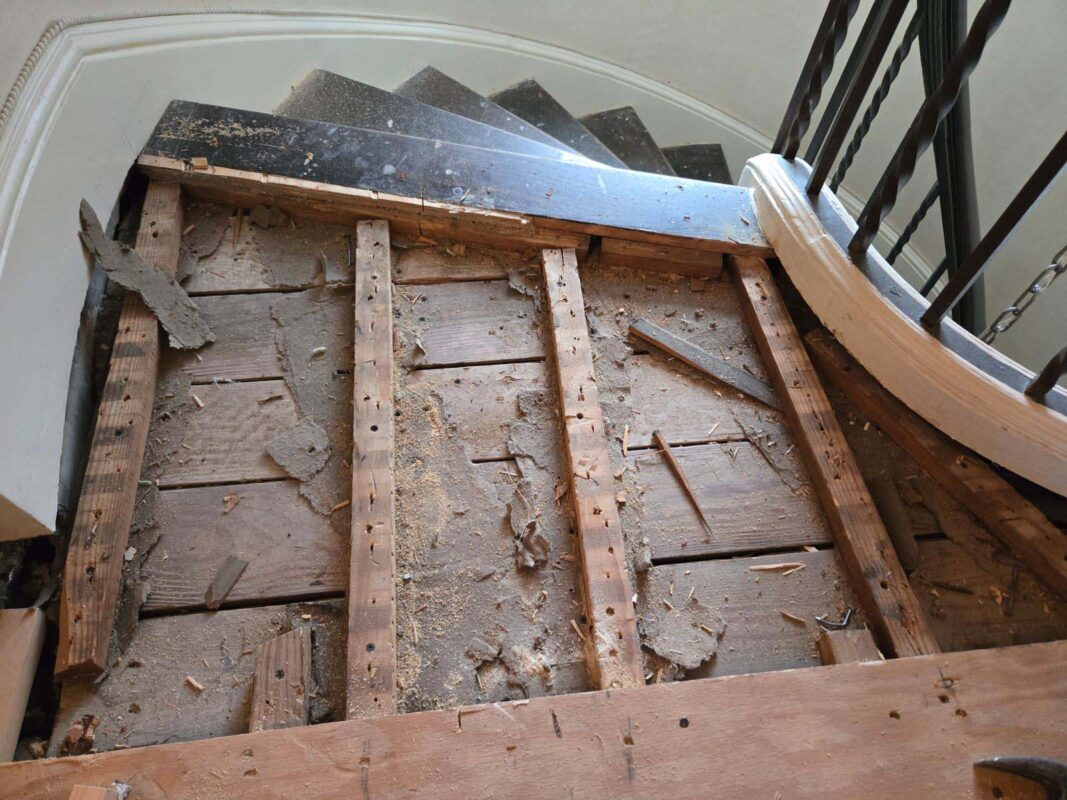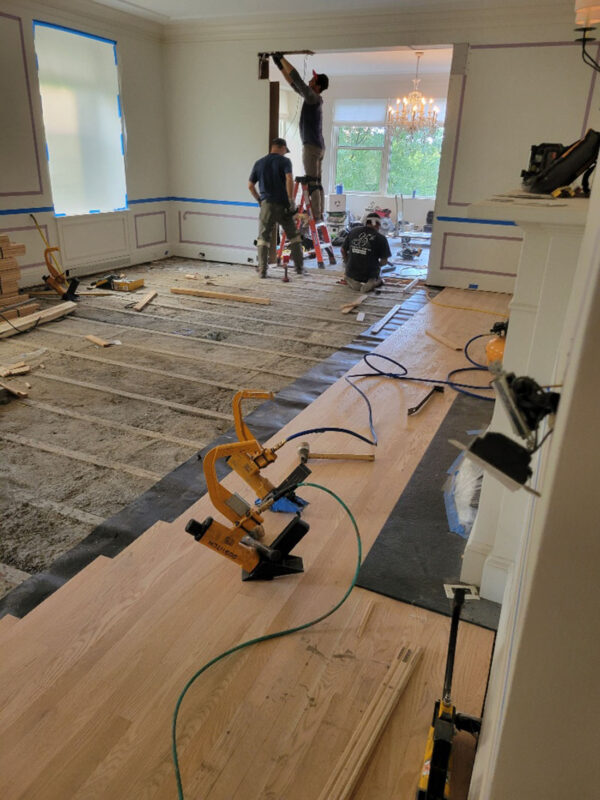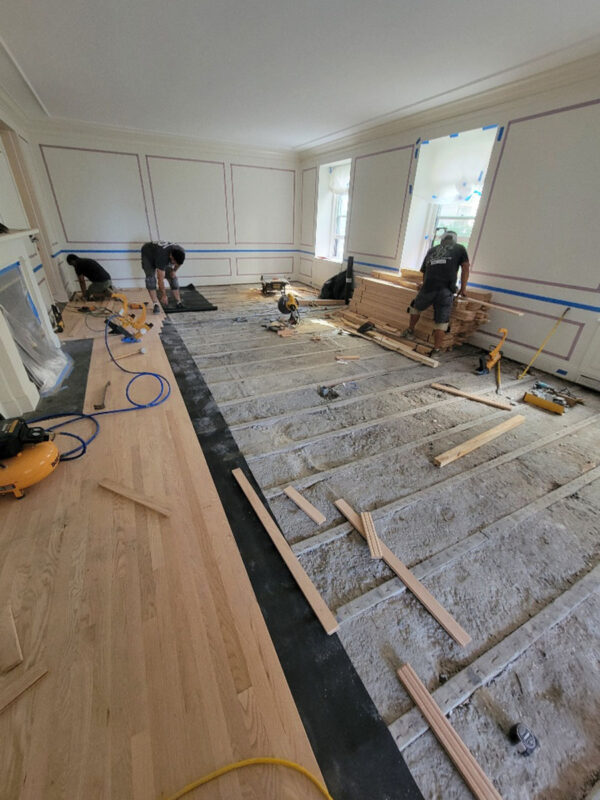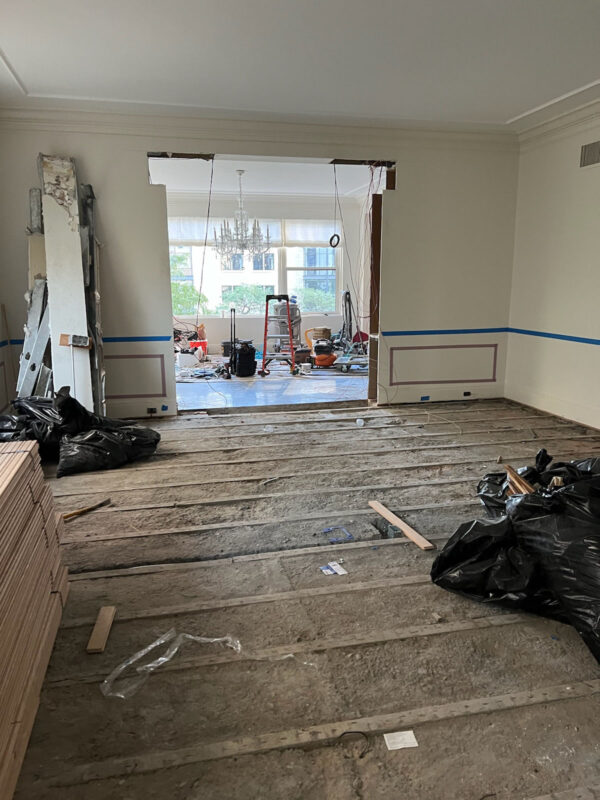With Halloween just around the corner, a squeaky floor in your home might be considered seasonally appropriate. But for those who have lived with a squeaking floor, the noise quickly loses its appeal.
If you were to ask the Mr. Floor customer service team, the second most frequent customer complaint, especially here on the North Shore, is squeaky floors. In truth, all floors will make some noise over time. Most of the time the sounds are intermittent (seasonal) and are more of a creek than a squeak.
The complaints we receive for squeaky floors are the “wake you up in the night, can’t get back to sleep” type of squeaks. What causes the noise you ask? Well, let me share what Chat GPT says when asked that question.
“Floor squeaks are caused by movement and friction between the different components of the flooring structure.”
So far, so good. Squeaks are definitely caused by the movement of different flooring components. ChatGPT goes on to say,
“Floor squeaks are usually caused by the movement of floorboards, subfloors, or nails rubbing against each other.”
If we’re talking about a floor that was installed using plywood as the subfloor, I’d give ChatGPT a passing grade. However, if the squeaky floor is in a home built in the 1950’s or before, and the flooring planks were attached to sleepers on top of floorboards that were, in turn, nailed to the floor joists, ChatGPT fails! (Our superior wood flooring expertise is safe for another day!)
Of course, with careful installation, and an underlayment of a protective barrier, you can minimize the probability of squeaking well into the future. In a future article we’ll discuss the ways of potentially reducing – but not eliminating – flooring squeaks on both new and older homes without replacing the floor.
HOW WOOD FLOORS WERE INSTALLED BEFORE PLYWOOD WAS WIDELY USED
You might think that plywood has been around forever, but in truth the now ubiquitous building material wasn’t widely available until well after the end of World War II. Prior to the use of plywood as a subfloor, many homes used a system of sleepers, 1” x 3” boards that lay on top of and perpendicular to the boards as the foundation for the hardwood flooring planks.

There were several reasons this construction method was used. First, by nailing sleepers on top of the floorboards you created a more stable structure for the floor. The sleepers helped to reduce any horizontal movement between the floorboards. Second, the space created above the floorboards by the sleepers could be packed with insulation, protecting the floors from the cold beneath. It was also common for electrical conduit and other mechanicals to be run in the space between the sleepers and the floorboards. Finally, installing sleepers as an underlayment to the hardwood floor planks was a tried-and-trued method of construction that had been around for decades.
WHY FLOORS WITH SLEEPERS SQUEAK
While it might seem counterintuitive, when a floor attached to sleepers squeaks, it’s not the hardwood flooring planks that you step on that cause the noise, it’s the nailed sleepers attached to the floorboards! That’s right, the movement and friction that causes the noise is almost always the sleeper becoming loose over time and sleepers rubbing against either the floorboards or finished flooring above.
The reason the sleepers move and squeak is due to the use of nails and the relatively long 16”. to 24” distance between nails holding the floor planks to the sleepers and the sleepers to the floorboards. With time, the longer distances between nails inevitably leads to loosened nails, sleeper movement and then the squeaks. In contrast, in newer homes plywood is used as the underlayment for hardwood flooring and is screwed down to the joists for a more permanent installation. Installing wood flooring over plywood allows installers to nail the finished flooring to the very stable plywood subfloor every six to eight inches, dramatically reducing the probability of squeaks years down the road.
Because it’s the sleepers making the noise, there’s no easy way to remedy the situation without pulling up the finished floor. In a recent project, we replaced the wood flooring in an older North Shore home rather than refinishing the floor because the family wanted to eliminate the squeaking.


You’ll notice in these project photos that we didn’t lay down plywood on top of the existing sleepers. The reason this wasn’t an option was that the floor levels between rooms would have changed with the addition of plywood on top of the sleepers. The owners opted for us to reinforce and screw down the existing sleepers to the floorboards supporting them and then to lay down new finished flooring on top of the newly secured sleepers.
Of course, with careful installation, and an underlayment of a protective barrier, you can minimize the probability of squeaking well into the future. In a future article we’ll discuss the ways of potentially reducing – but not eliminating – flooring squeaks on both new and older homes without replacing the floor.
Igor Murokh
Igor is a graduate of the University of Illinois and holds a B.A. in Economics. He has worked in the flooring industry for over 30 years and is the VP and Sales Manager of Mr. Floor Companies in Skokie, IL. Igor is a certified wood flooring inspector (CWFI) and routinely helps clients assess flooring issues.

